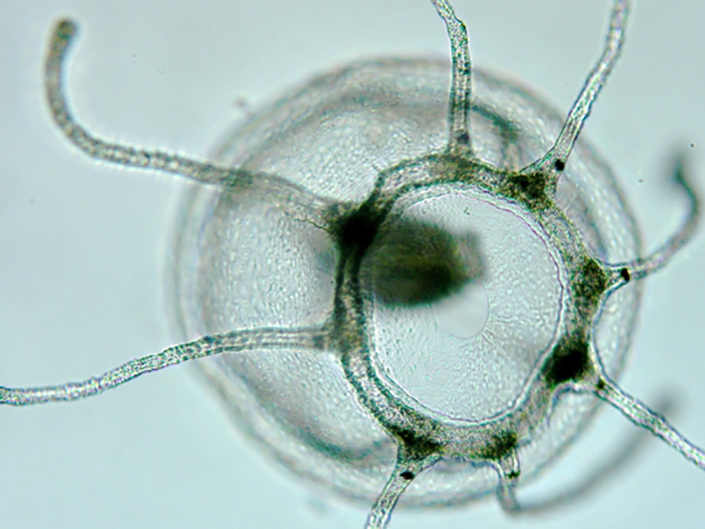Immortal jellyfish: How does this species skip steps in its lifecycle?

Maria Pia Miglietta, an assistant professor in the Department of Marine Biology at Texas A&M’s Galveston campus, received an Early Concept Grants for Exploratory Research (EAGER) National Science Foundation (NSF) grant to study cell regeneration and gene sequencing within a very special jellyfish, the Turritopsis dohrnii, or T. dohrnii.
In essence, the jellyfish skips important stops on the lifecycle wheel and reverts directly back to a polyp or one of its more immature growth states. The equivalent in a human would be akin to a 50-year-old adult transforming back into a five-year-old, skipping adolescent, teenage and early adult years.
Faced with unfavorable circumstances, such as being without food for a period of time, the T. dohrnii avoid death by undergoing cell transdifferentiation, a rare natural transformation of mature cells into a different cell type, and revert to a younger life cycle stage. Miglietta’s work centers around identifying genes that might be involved in T. dohrnii’s life cycle reversal and cell transdifferentiation.
“The ultimate goal is to understand the genetic machinery that allows T. dohrnii to revert its life cycle and escape death, and to characterize the genetic underpinning of its cellular transdifferentiation,” Miglietta explained.
With the advent of new DNA-based technology like Clustered Regularly Interspaced Short Palindromic Repeats (CRISPR) that introduces possibilities for gene editing, Miglietta says her research could potentially directly apply.
“Understanding how regeneration and cellular transdifferentiation work at the genetic level is crucial to regenerative medicine and to further our understanding of aging, senescence (cell aging and deterioration) and cell biology in general,” she said.
So while immortality might still be beyond our grasp for a while, helping those with genetic disorders like muscular dystrophy, sickle cell anemia or Huntington’s disease could be within a tentacle’s reach.

